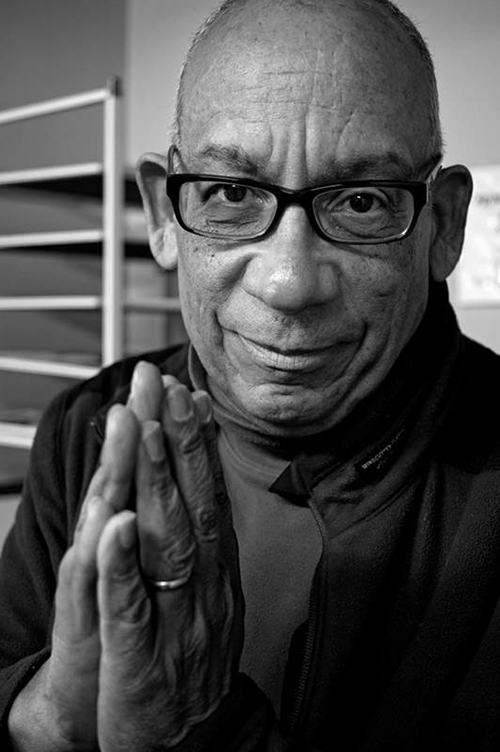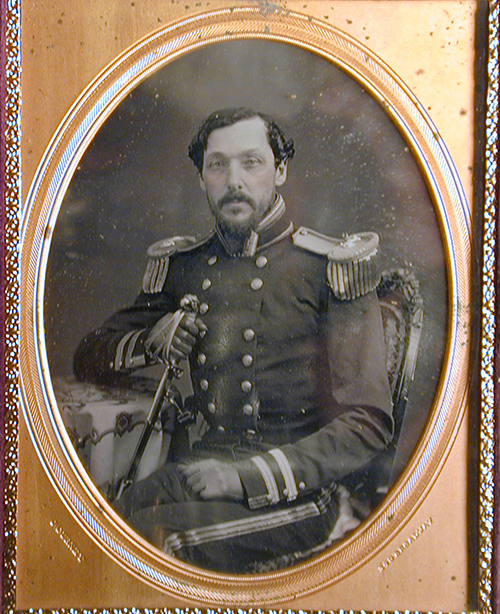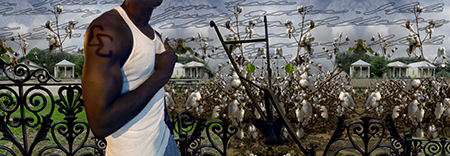
Like most artists, Douglas Carr Cunningham has held a variety of jobs including photojournalist, camera salesman, and adjunct professor. As a former U. S. Navy photojournalist, Cunningham has an extensive archive of images, “enough to last me a lifetime,” he laughs.
In 1999 Cunningham was one of the first local photographers to embrace the then-new digital photo technology, but he believes black and white film photography stands the test of time as an archival photo medium and even calls it “the photography of the future.”
Cunningham’s teaching career began years ago when local photographer Jack Alterman invited him to teach at the Center for Photography. Today, he enjoys watching the lightbulb go off in his students eyes. In preparation for the upcoming workshop Old Time Photography on May 17 that will include a tour of the exhibition Beyond the Darkroom, Photography in the 21st Century and a demonstration at Redux Studios, I spoke with Cunningham about his work. Here are some highlights from our conversation.
“Photography is always evolving and digital has blurred the lines between the general public and professionals,” he explained. “The problem with digital is storing information. Digital is virtual and technology is always changing so the question is, will you have to re-save your archives to a new medium every few years?”

Photography was introduced in 1839, when Louis Jacques Mandé Daguerre shared the first successful photographic process, dubbed the daguerreotype. A daguerreotype is a direct-positive process, meaning there is no intervening negative used to print the image. To create a daguerreotype a plate of copper is coated in silver, polished, sensitized with iodine vapors, and exposed in a camera. The image is then developed in mercury fumes and stabilized (or fixed) with a salt water solution. The plate is then put under glass and housed in a case.
Photography has continued to evolve and according to Cunningham, the invention of digital has resulted in a loss of ‘pre-visualization,’ a technique used by film photographers for ages. “Today I still shoot film right along with my digital precisely to enlighten my students and because if it’s done correctly, it’ll still be around for years to come.” Cunningham explains that a really good photographer will learn to use both because a photographer needs to have the foundation and the tradition to go forward.
“With pre-visualization you imagine what the shoot is going to look like and then you use technology to make it happen. It’s about the creative process of thinking it through.”
Cunningham’s favorite exercise is to ask his students to pretend their camera shoots only 24 images. “Look at the subject through the viewfinder and don’t look at your screen until you get home. Photographers call the act of looking at your LCD screen the second after you take a shot ‘Chimping’ or as Cunningham says: ‘monkey do, monkey see.’ Not the other way around. We take the photo, then we must look at the result. This is something we all do, and the downside of this habit is that it can interrupt your creative process and ‘chimping’ doesn’t allow for pre-visualization. This exercise breaks students of the chimping habit and Cunningham says they enjoy contemplative time in the darkroom and are inspired by this ‘old fashioned’ creative process. He insists that contrary to what we might assume, “Black and white film is the photography of the future because it’s permanent.”

On Saturday, May 17th, Cunningham will lead a private tour of Beyond the Darkroom: Photography in the 21st Century, a collection of images from the Gibbes’ permanent collection. This exhibition examines the evolution of photography through a variety of works acquired over the past ten years for the museum’s permanent collection. Ranging from the text and photo-based works of Carrie Mae Weems to the digital montages of Stephen Marc, this exhibition showcases the great innovation in photography today.
—Amy Mercer, Gibbes Museum Marketing and Communications Manager
Join Cunningham for a tour of Beyond the Darkroom, and a demonstration of the time honored art of black and white film at Redux Contemporary Art Center.
$40 for Museum, CCforP, and Redux Members, $45 Non-Members (box lunch included, transportation not included).
To purchase tickets please visit gibbesmuseum.org/events or call 843.722.2706 x21
Published May 7, 2014

